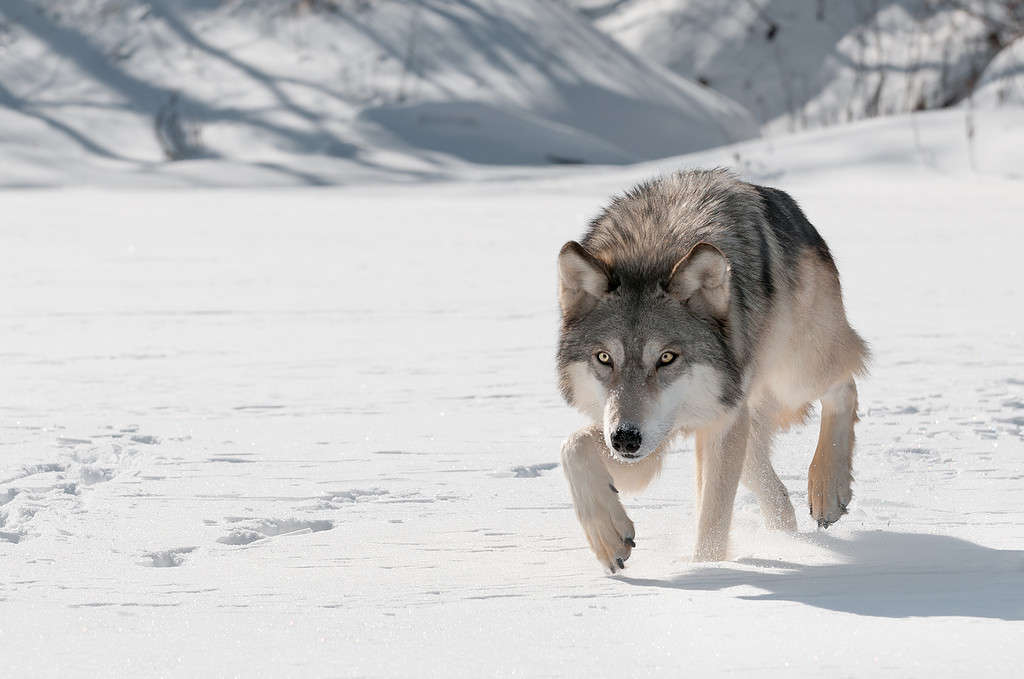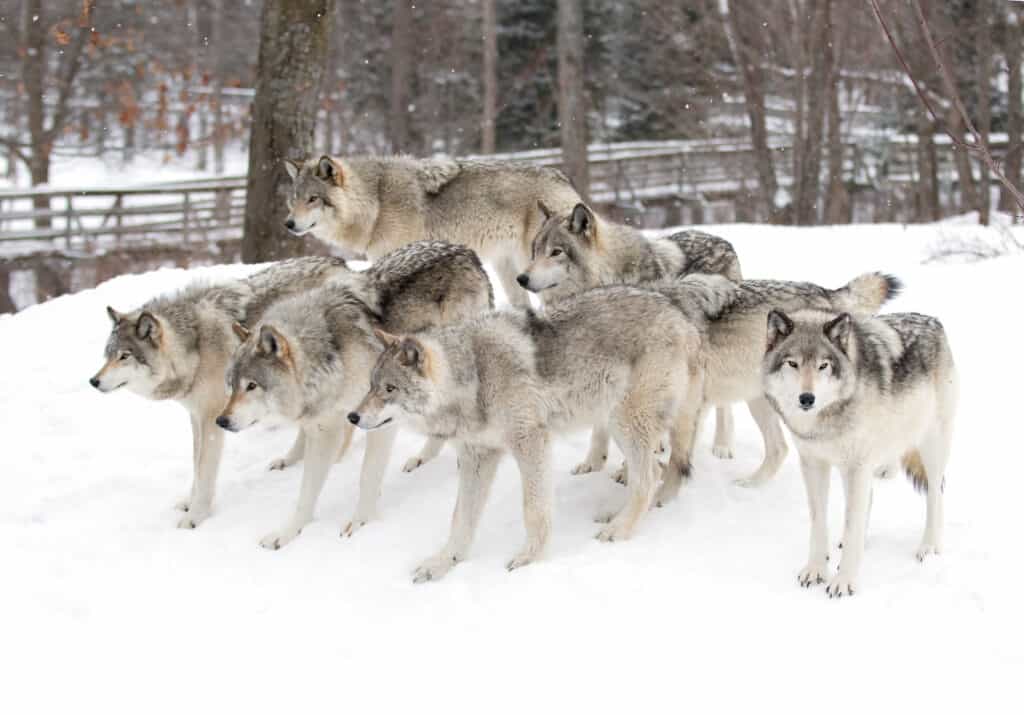Wolves once roamed the vast majority of the United States, inhabiting most states and preying on a variety of large mammals. However, they were hunted almost to extinction more than 100 years ago, resulting in them being extirpated from many states, including New York. But when were wolves driven out of the state, and what impact did it have on the ecosystem? Keep reading to discover everything you need to know about wolves in New York state, including whether there’s a chance they could one day return.
History of Wolves in New York State

Wolves were hunted to extinction in New York.
©slowmotiongli/Shutterstock.com
Like the rest of the United States, wolves were once widespread across New York. They inhabited the majority of the state in numerous thriving packs, with a population estimated to be in the thousands. However, as more human settlers began to inhabit the area, the expanding settlements encroached on the wolf’s habitat, leading to habitat loss. Additionally, this also furthered the risk of conflict between humans and wolves arising.
The resulting human-wolf conflict led to wolves being extensively hunted as people believed that they were a threat both to themselves and to their livestock, which many people at the time made a living from. One of the other incentives for the hunting of wolves in the state is that a bounty was placed. This bounty system essentially offered a reward from the government, which could be anything from $5 to upwards of $50, for the killing of a wolf.
The bounty system aided the belief that wolves were a nuisance and a threat, and it remained in place for many years. This, combined with habitat loss and the resulting fragmentation of packs across the state, meant that wolves were eventually extirpated from the state.
When Did Wolves Last Appear in New York State?
Wolves were extirpated from New York due to the reasons that we’ve just mentioned, with the last appearance coming in the late 1890s. Wolves have been completely absent from New York for more than 100 years, even as packs recover in other states across the country.
However, although there is no longer a viable population of wolves in the state of New York, there have been occasional sightings of wolves. These wolves likely wandered across the border from Canada, and their first appearance was in 2001 when one was shot near Great Sacandaga Lake. Further incidents have occurred in 2005 and 2021. On the latter occasion, the wolf was shot by a hunter who believed it was simply a large coyote. After much debate, DNA evidence was eventually released by authorities, who confirmed that the animal was actually a wolf and not a coyote.
Wolves remain an endangered species, both at the federal and state levels, meaning that it is illegal to hunt or kill one, except in self-defense.
Impact on the Ecosystem

Wolves are considered to be a keystone species because of the positive way that they impact the environment.
©Holly Kuchera/iStock via Getty Images
Wolves have a significant impact on the ecosystem, and this can be seen both in areas where they are present and in areas where they are absent. They are apex predators and prey predominantly on large mammals such as moose, elk, and deer. When wolves are present in an area, they are able to keep the populations of these animals in check. However, when wolves are absent, the populations may grow too large, and these animals are at risk of overgrazing or overbrowsing their habitats. This not only damages the habitat but can also lead to a shortage of food, which may result in animals starving.
Additionally, wolves are able to engineer the ecosystem by changing the behavior of the animals that they prey on. This is because the presence of wolves can cause the prey animals to change their foraging habits, which can in turn alter the actual landscape by allowing areas to regenerate and create new habitats. In fact, this is why wolves are also known as a “keystone species.”
Not only that but this is known as a“trophic cascade” as it can change the entire ecosystem. As we’ve just mentioned, the presence of wolves decreases the population of their prey and allows the prey animal’s food source — the vegetation — to regrow. This then helps other animals that rely on the vegetation for food and shelter to thrive. This can include animals such as birds, insects, and even mammals such as beavers.
Could Wolves Return to New York?

There is hope that wolves could one day return to New York.
©Jim Cumming/Shutterstock.com
Although wolves have been absent from New York for many years, there is hope that they could one day return to the state to live. New York has plenty of suitable habitats, with Adirondack Park being cited as one of the best locations for them.
The park is located in the northeastern region of the state and is the largest in the contiguous United States, spanning 6.1 million acres. The area includes large forests as well as numerous mountain peaks. One of the main factors that makes Adirondack Park such a suitable location for wolves is that it has similar habitats and human population density as the areas of both Michigan’s Upper Peninsula and Wisconsin where wolves have successfully recolonized.
Furthermore, although there are no wolves in the states that border New York, neighboring Ontario and Quebec both have large, stable wolf populations. In fact, there are wolves in Canada that live just 60 miles north of the New York border. This allows hope for the possibility of wolves moving down into New York and recolonizing in the state. However, another possibility that could be explored in the future is that of relocating wolves from packs in other states — such as Wisconsin and Michigan — to reintroduce wolves back into New York.
The photo featured at the top of this post is © AB Photographie/Shutterstock.com
Thank you for reading! Have some feedback for us? Contact the AZ Animals editorial team.






